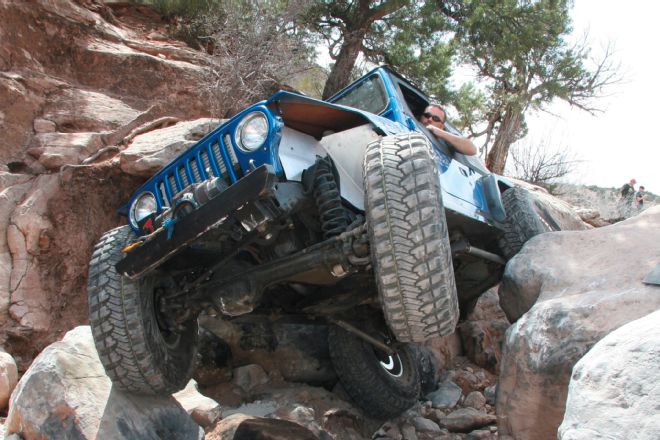
 Ali Mansour
Brand Manager, 4WD & Sport Utility
Ali Mansour
Brand Manager, 4WD & Sport Utility
Whether you’re running an independent, leaf-sprung, or multilink suspension, each system has a joint at which it pivots or flexes. These suspension joints are what allow items like your control arms and leaf springs to cycle without binding or breaking. Just like trucks, not all joints are built alike. If you’ve been in the market for a new suspension kit, you’ve likely noticed that many aftermarket companies offer its own brand-specific joint variation.
Rod Ends
Spherical rod-ends are one of the most commonly used joints in the aftermarket. From sway bar endlinks to long-travel A-arms, these non-rebuildable joints range drastically in strength and size. A rod-end’s basic design consists of a swiveling steel ball that’s pressed inside a forged-steel body. Many rod-ends will also have some type of injected plastic filler or Teflon liner to help the ball rotate freely.
The misalignment spacers that accompany the joints can center the rod-end, so it can have a high degree of rotation. This generally equates to an increased range of motion and reduced bind during articulation. Desert-bound and go-fast Trophy Trucks and Ultra4 race buggies often use rod-ends on their suspensions because high-quality versions can be incredibly durable and survive well in the dry desert conditions. Right- and left-hand thread variants of the joints make them easy for the user to adjust.
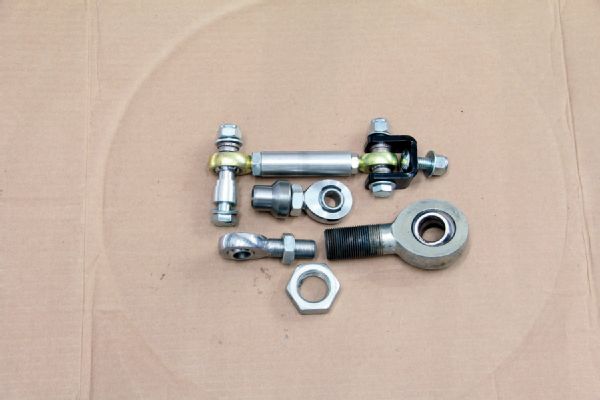
We’ve had great luck using rod-ends as steering endlinks on our trail rigs. This isn’t a universally embraced practice for daily driven vehicles, but when used with a high-quality rod-end, can be a very simple, strong, and effective way to finish out the steering system on your 4x4. Rod-ends are sometimes hard to find in a pinch, which makes it a part you definitely want to keep a spare of. There are some schools of thought that suggest only running right-hand joints, so you only need to carry one spare. The downside is a link with two right-hand joints can’t be as easily adjusted as a link with left- and right-hand fittings.
Panhard or track bars are also another place rod-ends work well, but given the steel joints have virtually no way of absorbing vibrations, more of it will be transmitted throughout the rig. This harsh transmittal-vibration and solid-mount can lead to bracket fatigue, and in some cases, complete failure. A wet and muddy climate will also prematurely wear rod-ends, requiring you to replace them more often. For the most part, rod-ends are ideally better suited for competition and off-road-only vehicles.
Bushings
At the OEM (Original Equipment Manufacturer) level, most companies use compound-rubber bushings as the pivot joint of choice. This is largely due to its durability, vibration damping, and low manufacturing cost. Compound-rubber bushings are the most widely used, cost-effective, and easy-to-come-by joints. They are inexpensive and generally easy to replace and tend to be a great joint for the vast majority of ’wheelers. However, as with the other joint options, not all rubber bushings are created equal.
Vibration absorption may be the rubber bushings biggest claim to success. Less vibration equates to less strain and wear and tear on your rigs parts. While they do provide ample movement for most suspension systems, they typically do not have as much range-of-motion as rod-ends. In terms of cost and availability, bushings rank the highest on our list, as they are the most easily purchased. From car dealerships to auto-parts houses, sourcing a replacement bushing is usually a much easier endeavor than scouting for a rod-end or flex joint.
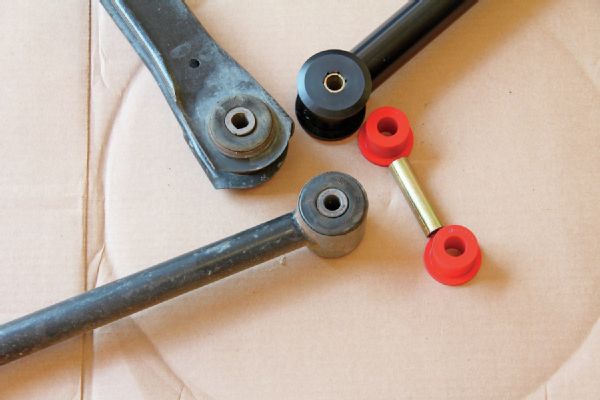
One of the most durable bushings we’ve found on the market is located under the Jeep Wrangler TJ and JK. In a world where aftermarket suspensions are at the top of most ’wheelers must-have list, it’s sometimes hard to fathom that stock is what works best. What is often forgotten or overlooked is the massive amount of money, time, and research that has gone into making OE control arm bushings what they are today. Some aftermarket companies even use the factory control arm bushings in their suspension systems.
In the aftermarket suspension world, you’ll often see urethane bushings as an option or factory-replacement upgrade. Urethane bushings are generally more durable than factory-style bushings but can be a touch stiffer. This stiffer compound will often tighten the feel of your suspension by removing the unwanted play that rubber bushings, especially when well-worn, can deliver. The urethane joints’ oil-resistant composition prevent them from breaking down as easily as their rubber counterparts but often require more servicing (grease) to prevent squeaking. Both urethane and compound-rubber joints are more accommodating to harsh or wet climates.
For a daily driven vehicle, it is hard to beat a bushing for cost and value. Sure, your rig’s articulation may be more limited, but a set of lockers will take care of the need for all your wheels to be planted. We’re perfectly happy running bushings in our rig’s control arms, and occasionally, use them for sway-bar endlinks and track bars. With leaf-sprung rigs, urethane bushings work well in both the springs and shackles when greased regularly.
Rebuildable Flex Joints
OK, you’ve read about bushings and rod-ends and you’re probably piling up the pros and cons of each. If your next thought is you need something in-between, well, here it is. A rebuildable flex-style joint, such as the Currie Enterprises Johnny Joint, has been one of the most popular joints in recent years. Mostly due to their ability to absorb vibration better than a rod-end, while maintaining a durable, and often competition-proven, design.
Each rebuildable-style flex joint has its own way of securing inside the link end, but most companies choose a polyurethane insert for the spherical ball to rotate on. The flex joints are usually forged and can range in price, quality, and longevity. For avid ’wheelers who still drive their vehicles a fair amount on the street, flex joints offer a sweet spot between OE bushings and rod-ends. This happy medium does come at a premium, though.
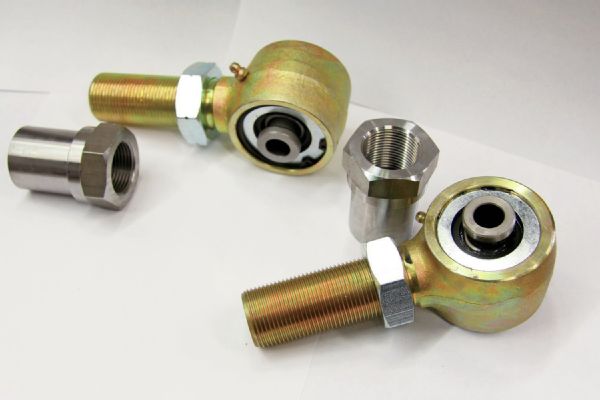
Rebuildable flex joints can be just as expensive, sometimes more so, than rod-ends, and are often available as special order only. You can most likely forget about your local parts store keeping them in stock. It’s wise to carry a spare, or at the very least, spare parts, since they are rebuildable. Even though the entry price may be steep, the cost to rebuild an average joint is generally fairly inexpensive and it’s something you can easily do at home.
As is the theme with the flex joints, they fall somewhere in the middle when it comes to climate survival. Assuming they are serviced regularly (greased around every oil change), they should last quite a while. Some bodies are more susceptible to rust than others. When used in control arms, the joints simply work great and are often fitted with a urethane or compound-rubber bushing at the opposing end of the link. Track bars are another acceptable use, and we’ve even seen them used with great results in anti-wrap bars.
Tie-Rod Ends
If you take a peek under your stock 4x4, you’ll likely find an assortment of tie-rod ends. Mostly used on steering links, tie-rod ends have made appearances as track-bar ends over the years, as well. For steering systems, they are about as safe and versatile as you can get. The ease of availability, wide range of styles, and fact that they are greaseable -- though some are not -- make them an easy choice for factory and aftermarket steering manufactures.
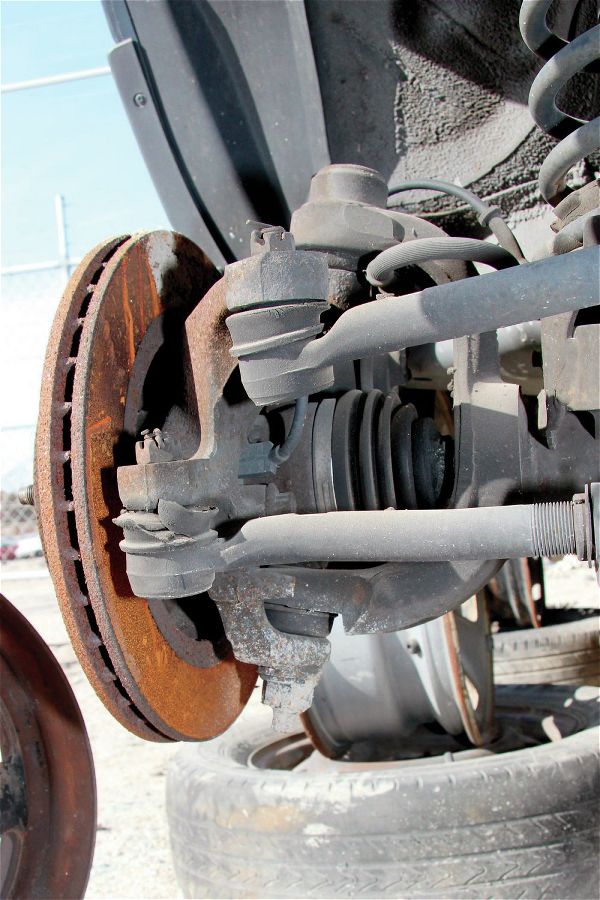
The downside: Tie-rod ends are more prone to wearing out when mixed with large tires and heavy use off-road. As they wear, tie-rod ends can create slop in your steering, which is never a good feeling. There are a few tricks of the trade for removing them, but the dust boot is usually a mangled mess after an encounter with a pickle-fork tool. For custom applications, you must purchase a reamer or insert to create the tapered fit tie-rod ends require.
Reamers are not cheap, but the cost offset over high-end rod-ends is pretty close. Ultimately, tie-rod ends serve most rigs well, but like every joint on our list, they have their plusses and minuses. They are tops in our books for steering, but track bars are no place for them.